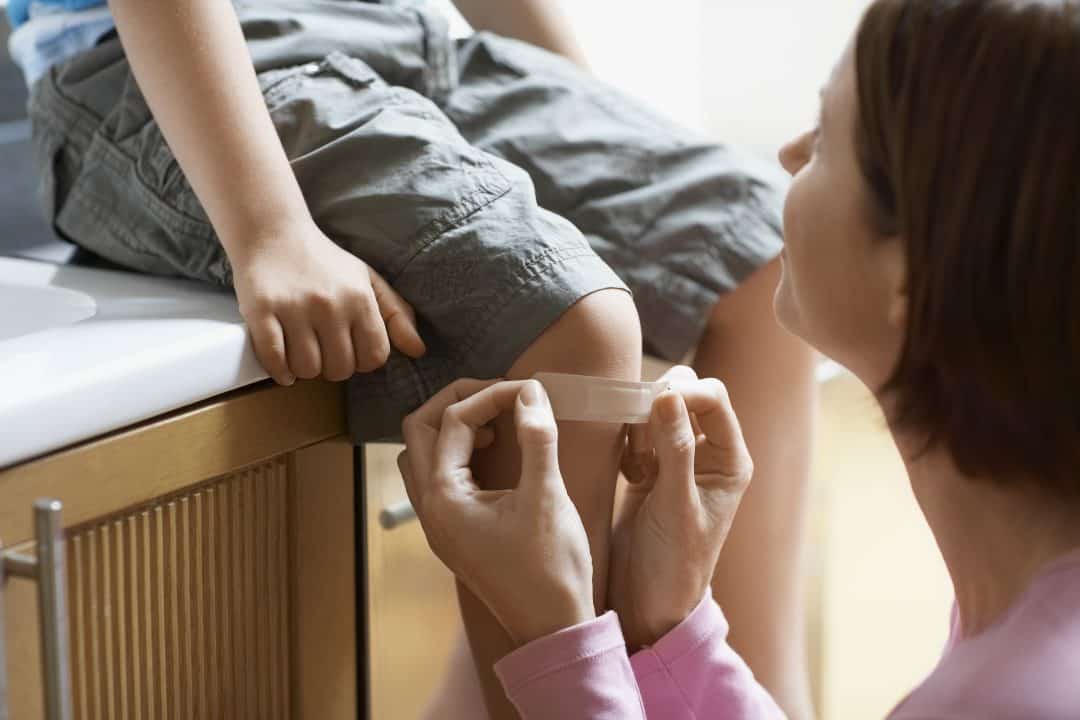You always want to be safe whether you are in the world, and your cabin is no exception.
You should ensure that you do everything in your power to ensure your safety. This means being prepared for when you may sustain and injury or hurt yourself. Whilst staying in a remote location this is even more important than ever as it may take a long time to travel to a hospital or for medics find you.
You should prepare yourself a list of items which you need in your First Aid Kit for when you visit your cabin. There’s nothing worse than travelling to your cabin and realizing you’ve forgotten vital equipment.
In this article, I’ll be providing you with a comprehensive guide as to what you’ll want to keep in your First Aid Kit.
Getting to a Hospital can take a long time
When in a remote location, you’re likely to be far away from any civilization. Because of this, it can take a long time to travel to a hospital. Whilst staying in a remote location this is even more important than ever due to the lack of emergency services. You don’t know how long it will take for medics to find you.
You should be able to take care of yourself at least until you’re able to get help. Therefore, it’s vital that you have an extensive first aid kit. For example, if you’re bleeding heavily – you’re not going to last the journey to hospital unless you’re able to control the bleeding with a bandage.
Who would have thought something as simple as a bit of cloth could save your life?
If you know that you have allergies, then it would be a great idea to carry an EpiPen in case you find yourself suffering from an allergic reaction. This could save your life or at least control your reaction enough to give yourself time to seek professional help.
You may believe you’re safe because there’s a small town nearby which you could pop over to in-case you need to see a doctor. However, many small towns don’t have the luxury of an emergency room open 24 hours a day. In this case, you may have to wait extended periods of time to see a doctor.
Remember that this first aid kit isn’t supposed to be a magical cure for all your problems. It could save your life and stall time however ultimately, you’ll always want to seek professional medical care when an incident takes place.
Common Injuries at the Cabin
When staying a cabin, you’re likely to sustain small injuries whilst roaming the area. Small injuries include small scratches, cuts, and bruises. When staying in my cabin I often cut myself on sharp trees, thorns. The bumpy, rocky terrain is easy to hurt yourself on.
It’s almost a certain you’ll sustain multiple small injuries, however if you’re exploring a lot then you’re likely to sustain slightly more serious injuries such as larger cuts and broken bones.
Whilst staying in a cabin you’re also vulnerable to the weather. If staying in an extremely hot climate, then you’re likely to suffer from sun burn and heat exhaustion. If you’re staying in a cold climate then you may suffer from hypothermia and frostbite. Because of this, you’ll have to make relevant decisions to what you pack in your first aid kit. For example, if you’re staying in a extremely hot climate then you’ll need to pack sun scream.
The First Aid Kit Checklist
Here I’ll be including a checklist of all the things which you should include in your first aid kit. This kit will be sufficient for a small family, so depending on the size of your family you should either bring more stock or less.
NHS List
- plasters in a variety of different sizes and shapes
- small, medium and large sterile gauze dressings
- at least two sterile eye dressings
- triangular bandages
- crêpe rolled bandages
- safety pins
- disposable sterile gloves
- tweezers
- scissors
- alcohol-free cleansing wipes
- sticky tape thermometer
- skin rash cream
- spray to relieve insect bites and stings
- antiseptic cream
- painkillers
- cough medicine
- antihistamine tablets
- distilled
- eye wash
The Red Cross List:
- 2 absorbent compress dressings (5 x 9 inches)
- 25 adhesive bandages (assorted sizes)
- 1 adhesive cloth tape (10 yards x 1 inch)
- 5 antibiotic ointment packets (approximately 1 gram)
- 5 antiseptic wipe packets
- 2 packets of aspirin (81 mg each)
- 1 blanket (space blanket)
- 1 breathing barrier (with one-way valve)
- 1 instant cold compress
- 2 pair of nonlatex gloves (size: large)
- 2 hydrocortisone ointment packets (approximately 1 gram each)
- Scissors
- 1 roller bandage (3 inches wide)
- 1 roller bandage (4 inches wide)
- 5 sterile gauze pads (3 x 3 inches)
- 5 sterile gauze pads (4 x 4 inches)
- Oral thermometer (non-mercury/nonglass)
- 2 triangular bandages
- Tweezers
These are fairly extensive lists, I believe that the list produced by RedCross is more extensive and informational as they also provide measurements and amounts. Personally, I prefer to bring more than what I need so I double up on everything – it just allows me to not have to worry about purchasing anymore in the future. It’s always better to have too much than too little.
Conclusion
This was my guide and complete check list for everything you need in your cabins first aid kit. I hope that it was very useful and could even save your life. If you feel as though I’ve missed anything out, then feel free to leave a comment for me below. I’ll continue to update this post to provide viewers with the most accurate check list possible.
My name is Eugene Thornhill. I'm an outdoor enthusiast who loves nothing more than being one with nature. I've lived in numerous outdoor homes and even constructed my own. Living off-grid is something I'm very familiar with, more so than living in the city. For many years I've dealt with the many problems of living off-grid. It's time to pass on my knowledge through Cabinguides.


